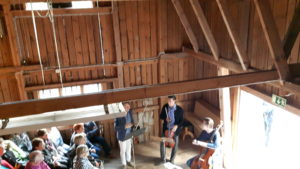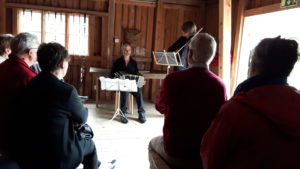Taking further steps with the TACCLE4-CPD project – Part One: Setting the scene for project activities in the field of VET
In December 2017 I wrote a blog on the kick-off meeting of the EU-funded TACCLE4-CPD project that took place in our institute ITB at the University of Bremen. In that blog I described the background of TACCLE projects and presented the achievements of the pioneering TACCLE1 and TACCLE2 projects. I also drew attention to the legacy of the recently completed EU-funded Learning Layers project (2012-2016) upon which our institute can draw in the present project. As we see it, the Learning Layers’ Construction pilot was in many respects a predecessor of the present project in the field of vocational education and training (VET). Now it is time to have a closer look at our context of work and make more specific plans for the forthcoming activities. I will start this with an updated description of the TACCLE4-CPD project that I prepared fro the ITB website and then move on with the stock-taking (with focus on the Learning Layers’ successor activities and with the project neighbourhood that I have found from our own institute).
TACCLE4-CPD in a nutshell: What is it about?
The ErasmusPlus project TACCLE4-CPD promotes strategies for integrating digital technologies into teaching/learning processes. From this perspective the project supports teacher trainers and organisations that develop teachers’ and trainers’ digital competences. The project builds upon the digital tools, web resources and training concepts that have been created in prior TACCLE projects or other predecessor activities. From the ITB point of view, this project provides an opportunity to work further with the Learning Toolbox (LTB), a key result from the Learning Layers project.
TACCLE4-CPD in a closer look: What is it trying to achieve?
The TACCLE4-CPD project is funded by the ErasmusPlus programme as a ‘strategic partnership’. It promotes educational strategies for integrating digital technologies into teaching/learning processes in different educational sectors. From this perspective the project puts the emphasis on supporting teacher trainers and/or organisations that develop teachers’ and trainers’ digital competences. When doing so, the project builds upon the digital tools, web resources and training concepts that have been created in earlier TACCLE projects and other predecessor projects.
Regarding the earlier TACCLE projects the current project can make use of the TACCLE Handbook (that will be updated), the TACCLE2 websites and the separate TACCLE courses. Regarding the Learning Layers project the current project can build upon the work with the Learning Toolbox (LTB) and on the Multimedia training schemes (that were organised with construction sector partners).
Whilst the previous TACCLE projects have been working directly with pioneering teachers, the TACCLE4-CPD project addresses now the training of trainers. In the same way the emphasis is shifted from particular teaching/learning innovations to shaping models for continuing professional development. In this respect the partners promote community-development among professionals and organisations that support the delivery of digital competences and their integration into learning culture. Regarding ITB, it has a specific possibility to develop cooperation and synergy between ongoing European and German projects – in particular between TACCLE4-CPD and the parallel projects STRIDE and DMI.
—
I think this is enough of the starting points of the TACCLE4-CPD and how I interpret our task in the project. In my next blogs I will continue by looking more closely what we can bring into the project from the Learning Layers’ follow-up and from the neighbouring projects.
More blogs to come …



